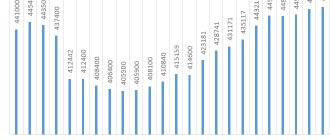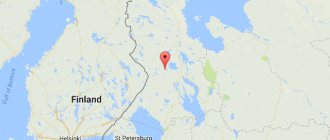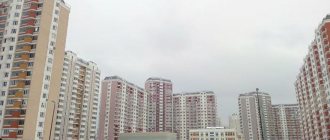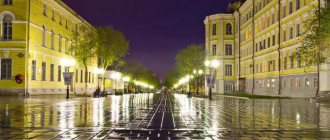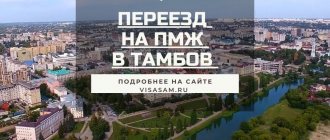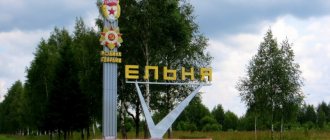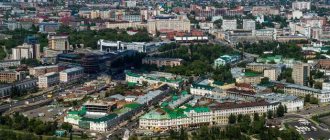City `s history
The settlement got its name from the river of the same name. The population of Samara was first discovered in 1646. Then the first census was carried out. Since 1719, the settlement belonged to the Astrakhan province. At that time, there were only about 200 households in Samara. The rapid development of the settlement began in 1850, when a decree was created on the formation of the Samara province. In the center there was a settlement with a population of 15 thousand people. During the revolution in 1917, the city did not suffer significant losses. The population continued to grow.
During the Soviet Union (in 1928), the city became the center of the Middle Volozhsk region. At the same time, it had a different name - Kuibyshev. The city's population continued to grow. And even during the Great Patriotic War there were no great losses. By 1979 the population had already exceeded 1 million.
Modern Samara is a metropolis that is rapidly developing economically and culturally. People from neighboring provinces come here to work. Many of them remain forever.
Population of Samara
Now Samara has 1,156,659 thousand inhabitants, this is an impressive figure within Russia. Meanwhile, I note that the population of Samara has been declining quite noticeably in recent years compared to the Soviet period.
See for yourself:
| Year | Population |
| 1931 | 222 308 |
| 1970 | 1 044 849 |
| 1982 | 1 243 000 |
| 1993 | 1 232 000 |
| 1996 | 1 192 000 |
| 2004 | 1 144 200 |
| 2009 | 1 164 685 |
| 2017 | 163 719 |
I believe that the outflow of residents is directly related to economic and social problems that the city cannot survive after the collapse of the USSR.
Physiographic characteristics of the city
The settlement is located on one of the banks of the large Volga River. It is no coincidence that the population of the city of Samara has been gradually increasing since ancient times. People sought to live closer to the reservoir in order to farm and fish. The locality lives according to Samara time (plus one hour relative to Moscow). The city is predominantly flat, with ravines here and there. Samara is located at an altitude of 286 meters above sea level.
The settlement has a temperate continental climate. Winters here are mild and summers are not hot. Average annual temperature +5…+6 °C. The hottest month is August. The maximum temperature was recorded at 39 °C. The absolute minimum temperature was recorded during the war years. In the winter of 1943, the thermometer showed 43 degrees below zero.
Samara is a large city in which the issue of ecology is acute. There are many enterprises operating in the locality that negatively affect the chemical composition of the air.
Where is Samara?
Samara is located in the Middle Volga region (territories of the Volga Current), located on the banks of the Volga before the Lower Volga (Volgograd, Astrakhan). More precisely, on the banks of the Saratov reservoir, between the two rivers Samara and Sok.
Opposite the place where the city of Samara is located, there is a unique natural monument Samara Luka - a bend of the Volga that goes around the Zhiguli Mountains.
Samara is connected to the rest of Russia by air and rail, highways, and waterways - the Volga has at all times been the main shipping artery in the European part of the Russian Federation.
Population by year
Samara occupies a leading position in terms of population. What place is given to the settlement? The Samara-Togliatti agglomeration is in third place after St. Petersburg and Moscow. However, the city was not always considered a megalopolis. At the beginning of the 20th century, only 150 thousand people lived here. The city developed rapidly, its area expanded. By 1970, the population exceeded 1 million people. According to official data for 2022, 1 million 169 thousand people live in the metropolis.
The demographic situation in the city has begun to change significantly since the beginning of the 21st century. The number of deaths has decreased, and the birth rate has increased. Not only Russians are born here, but also representatives of other nationalities of post-Soviet countries. Ukrainians, Belarusians, Tatars, Chuvashs, etc. live in Samara.
Administrative structure and power
The city is divided into nine districts. The largest population is recorded in the Industrial District (about 280 thousand people). The bulk of enterprises and business centers are concentrated here. Despite the large population, this area experiences the highest levels of air pollution. The second most populous region is Kirovsky District. Home to 225 thousand people. The environmental issue is also acute here.
What is the population in Samara? The city consists of several municipalities that cannot be considered separately. The smallest population was recorded in the Samara region. Only 30 thousand people live here. Next come the following districts: Leninsky, Kuibyshevsky, Krasnoglinsky, Zheleznodorozhny, Oktyabrsky and Sovetsky.
The city administration consists of the Samara Duma and the head (mayor) of the city. The Duma includes 36 municipal deputies who are elected by city residents. Regardless of the population of Samara over the years, the main role in managing the city is given to the people. People independently choose those responsible for managing the main city organizations.
Economy and industry
The population of Samara is rapidly increasing due to good economic development. There are many enterprises operating in the city, creating jobs for local residents and visitors. Great attention is paid to mechanical engineering and metalworking. There are more than 150 enterprises of various capacities operating in the settlement. One of the largest enterprises is ZhBI-Povolzhye. Thanks to his work, there has been a significant increase in the city budget.
The city is also developing well in the trade sector. Samara's population is growing due to young people who come to the city in search of well-paid work. The guys look for interesting jobs and then stay in the city forever. Young people mostly work in trade and services. There are federal chain stores in Samara, such as Perekrestok, Pyaterochka, Spor, etc.
Samara
The city of Samara first appears in official documents in 1586 during the reign of Fyodor Ioannovich, when in the spring they began to build a fortress to protect against the Nagais and Kalmyks, to provide a waterway along the Volga from Kazan to Astrakhan. The fortress was small, an impenetrable forest approached it almost closely from the north and east, it was covered by the Samara River from the south, and the mighty Volga from the west. In 1688, the Samara fortress was renamed a city.
In 1708, under Peter I, Samara was listed as the ninth city of the Kazan province, and in 1719 it was included in the Astrakhan province. At that time, there were 210 households of urban residents on the territory of the city. Since 1851, Samara has been a provincial city with a population of 15 thousand souls. In terms of the amount of wheat harvested, the Samara province was in first place in the entire empire. Trade in colonial, manufactured and other goods was carried out in 375 shops. Markets were held here weekly in two squares. Three large fairs were held throughout the year: Sobornaya (autumn), Vozdvizhenskaya and Kazanskaya (summer), which lasted ten days.
By the end of the 19th century, there were 46 plants and factories in Samara, employing 2.5 thousand permanent workers; industrial growth was hampered by the lack of the necessary energy base. The first city power plant in Samara was built in 1900. By 1917, Samara already had 90 industrial enterprises, a mechanical bakery, and an elevator with a capacity of 3.5 million pounds of grain. Since the city had an advantageous geographical location, Donbass and the Urals became the main suppliers of metal for industry, which served as the basis for the creation of a large number of large mechanical engineering enterprises and metalworking. In the vicinity of the city there were such minerals as sulfur, phosphorites, limestones, dolomites, gypsum, chalk, clay, and sands. This led to the creation of the building materials industry. In the 30s, Samara became the center of oil production and refining in Russia. All these natural and economic conditions contributed to the development of the city as a large industrial center.
During the Great Patriotic War, the local industrial potential of the city was supplemented by a powerful industrial base of evacuated enterprises in Moscow, Leningrad and other cities.
Today the city of Samara is a regional center with a territory of 50 km in length and up to 20 km in width, geographical coordinates 53°12′ north latitude and 50°06′ east longitude.
As of January 1, 2003, about 1 million 164 thousand people lived in Samara: 644 thousand of them were women and 520 thousand men. The working population numbered 720 thousand people.
The population of Samara is multinational. Its composition is dominated by the Russian population (1 million 86 thousand people, or 93.3% of the total population), there are also Tatars, Ukrainians, Belarusians, Mordovians, Chuvashs, Kazakhs, Jews, and representatives of other nationalities.
The city is administratively divided into nine districts: Zheleznodorozhny, Kirovsky, Krasnoglinsky, Kuibyshevsky, Leninsky, Oktyabrsky, Industrial, Samara, Sovetsky.
Education
With the growth of the population in Samara, the need for new educational institutions also appeared. New schools and universities began to open here at the beginning of the 20th century. Today there are more than 200 kindergartens, about 180 secondary schools, and 37 universities in the city. There are also institutions of further education here.
You can hear a lot of good reviews about the Povolozhsk State Social and Humanitarian Academy. The university was founded back in 1911. Then it was the Samara Pedagogical Institute. Today, children who want to become teachers in chemistry, physics, biology, mathematics, Russian language, etc. can be trained here.
Many guys specially come to the metropolis to enter the Samara State Economic University. The educational institution was founded in 1931. Already in those years, children could receive an economic education at the European level.
Healthcare
The system of providing medical care to the population of Samara began to develop in 1825. At that time the settlement was considered a district town. A clinical hospital with 56 beds was opened here for the first time. Even then, people were provided with high-quality therapeutic care. By 1917, there were already 5 hospitals operating in the city. In addition, there was a tuberculosis dispensary and a psychiatric clinic. By the beginning of the Great Patriotic War, Samara already had 23 hospitals.
Today there are more than 70 outpatient clinics in the city. The population of Samara is more than 1 million. Therefore, there should be a lot of hospitals in the city. There are also numerous private clinics in the city. In 2008, a new center for providing emergency medical care on the water began operating.
Transport
In a large metropolis it is impossible to do without public transport. The Samara tram began operating in 1895. More than 20 routes have now been developed. Residents can get to any point in the village. Since 1926, a municipal bus has been operating in Samara. Transport travels along 48 routes. There are also 14 trolleybus routes.
Samara is one of the few regional centers with a metro system. There is one branch for 10 stations. The fare is 23 rubles, payment is accepted in cash. Schoolchildren and students can save money. However, you will first have to obtain a special travel document. Many residents in Samara still prefer to travel by minibuses. The fare is 25 rubles.
Sights of Samara
Main attractions of Samara:
- military-historical - Monument of Glory, Stalin's Bunker;
- monuments to Il-2, Soyuz launch vehicle, ZIS-5 car;
- religious - Church of St. George the Victorious, Iversky Convent, Ascension Cathedral;
- architectural - the mansions of Kurlina, Suroshnikov, Subbotina-Martison, Zhogolev, “House with Elephants”, the house of the Old Believers, the Poplavsky house.
And, of course, parks, embankments, squares - there are a lot of interesting things in Samara!



